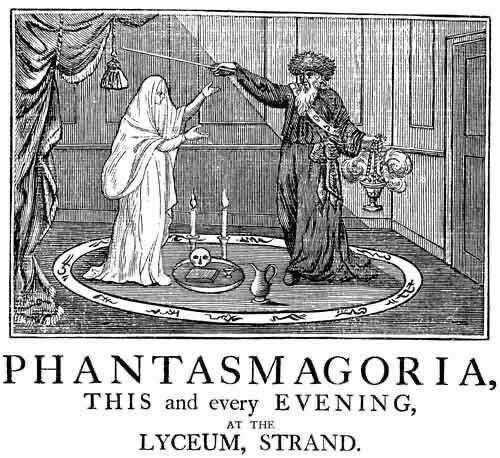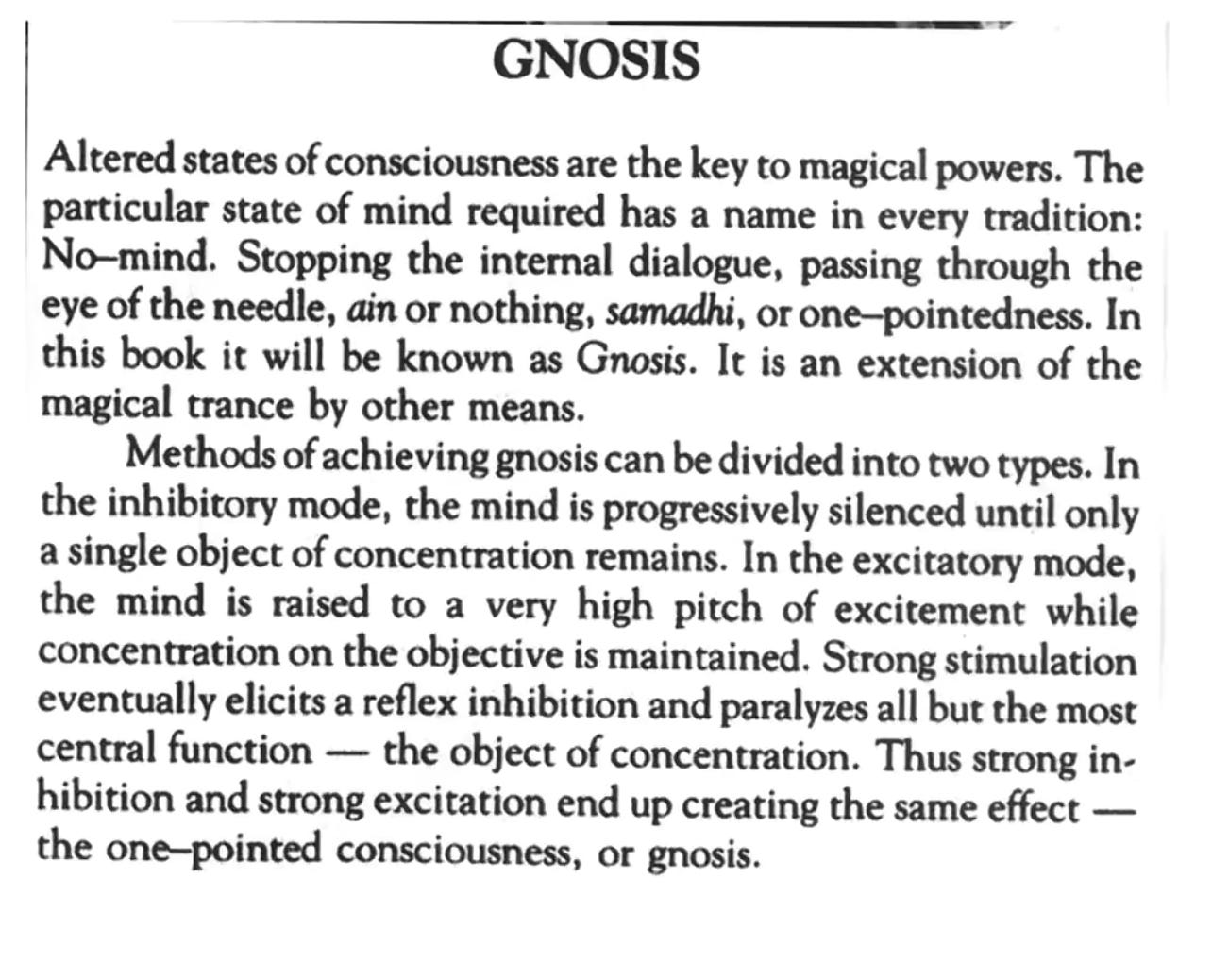"The initiate of Eleusis, while in the state of manteia (ecstasy), pronounced the sacred syllable. Then, the initiate’s Innermost appeared with light and beauty within the resplendent mirror... Many times the initiate provoked the state of manteia when drinking from the chalice of Soma. He was thus transported into the ineffable pleroma of love."
- Samael Aun Weor, The Revolution of Beelzebub
Noun
psychomanteum
A dark, mirrored room dedicated to communication with the spirit realm.
The psychomanteum as described above is a darkened chamber in which a practitioner gazes upon a reflective surface to commune with the otherworld. It is a literal space through which liminality is induced, an isolatory, external environment of mild sensory deprivation to evoke otherworldly visions and invite apparition. The inner psychomanteum is an attempt to articulate an internal faculty that is not a physical room so much as it is a door of the mind, a frame of mind that can be occupied as a space and analogized as gazing into the darkened mirror within, though its means of access are much more ambiguous and subjective than the physical act of scrying.
The inner psychomanteum analogizes a state of intent. Just as one would enter a chamber to gaze upon a mirror darkly, there is an inner space one enters, not in sleep or hypnagogia, but as a frame of mind, an inner space where one might facilitate an encounter. More than anything, it is metaphysical architecture to shape a liminal state that is phenomenologically abstract, just as many forms of media conceptualize this state as a place.
Abstract
The phenomenology of the experience of being in psychic contact with another person was explored in a series of observations using a novel dyadic interaction in imaginal space. Research participants working in pairs with eyes closed received instructions to imagine being in mental contact with one another for three minutes while they observed their internal experiences. Their reports indicated that the imagined contact was experienced as real, as intimate, and aroused the ambivalences usually associated with intimacy as well as phenomena suggestive of projective identification effects. This first part demonstrated that the liminal zone, or the transitional space between individuals, can be experimentally observed through the imagination. Part II of this report will present evidence that the experienced psychic contact was more than 'just imagination', and involved transpersonal interactions, including suggestions of synchronicity and telepathy.
Reed H. Close encounters in the liminal zone: experiments in imaginal communication part I. J Anal Psychol. 1996 Jan;41(1):81-116. doi: 10.1111/j.1465-5922.1996.00081.x. PMID: 8851258.
In Close Encounters in the Liminal Zone: Experiments in Imaginal Communication (Reed, 1996), evidence is presented that the liminal zone, or the transitional space between individuals, can be experimentally observed through the imagination, and that the experienced psychic contact was more than 'just imagination' and involved transpersonal interaction. The transitional space, referred to as the 'liminal zone,' is conceptualized as the area that exists between individuals. It is not a physical space but rather an imaginal one where psychic interpersonal contact can occur. This space was explored through a novel dyadic interaction where participants, with eyes closed, were instructed to imagine being in mental contact with each other. The experimental setup allowed for the observation of internal experiences within this imagined connection. The liminal zone, like the inner psychomanteum, is a phenomenological space through which transpersonal and psychic experience is facilitated through an internal apparatus. This conceptualization implies space, at least phenomenologically speaking, in that there is (or is perceptibly) a place where these interactions take place, where there is access to the reception and dissemination of psychic information. The ontological reality may differ entirely.
The paper emphasizes the 'phenomenology of the experience'’ indicating that accessing the liminal zone is not about a physical location but about a subjective, lived experience. It is through the internal observation of one's own experiences during the imagined contact that the characteristics of the liminal zone, such as feelings of reality, intimacy, and ambivalence, become apparent.
“Imagination is the star in man, the celestial or supercelestial body.” … The imaginatio, or the act of imagining, is thus a physical activity that can be fitted into the cycle of material changes, that brings these about and is brought about by them in its turn…. Imagination is therefore a concentrated extract of the life forces, both physical and psychic. “[2]
The key to the inner psychomanteum, so to speak, is the imaginal realm. This makes sense, as the imaginal is arguably the embodiment of liminal convergence: the faculty through which another layer of experience is accessed and the faculty through which it interacts with the external and abject.
The mechanism can modally be described as induced porosity—a deliberate softening of the boundaries between inner and outer, self and other, known and unknown. Where the traditional psychomanteum uses darkness and reflection to create this porosity externally, the inner psychomanteum achieves it through a specific quality of imaginal engagement that moves beyond mere visualization toward genuine encounter.
“Our solution is cause of our Congelation;
For Dissolution on the one side corporall,
Causeth Congelation on the other side spirituall.”
George Ripley’s Compound of Alchymy (1591)
The inner psychomanteum is experienced as simultaneously intimate and vast, a paradox that points to its liminal nature. A space that is both enclosed and boundless, private yet potentially connected to other consciousness. The boundaries of this space are permeable rather than fixed. They seem to respond to the quality of attention brought to them, expanding with receptivity and contracting with forceful intention. This suggests that the inner psychomanteum is not a static location but a dynamic field that is co-created through the interaction between consciousness and the imaginal realm.
The inner psychomanteum engages the inner faculties of imaginal senses, modes of perception that are analogous to but distinct from ordinary sensory experience. The inner eye is an example of such an internal sense. Clairvoyance, clairaudience, clairsentience, empathic resonance, and other forms of psychic reception present the way external information may interact with these faculties.
The viewer learns to recognize when they have genuinely entered the inner psychomanteum versus merely engaging in ordinary imagination through several phenomenological markers:
Autonomous Agency: Imaginal figures or experiences display genuine autonomy: they surprise, resist, or respond in ways that feel genuinely "other" rather than projected.
Temporal Distortion: The loss of ordinary time consciousness and entry into qualitative time.
Somatic Resonance: A felt sense of presence that is registered in the body, often as subtle shifts or changes in breathing or heart rate.
Numinous Presence: Information or insights that feel "packed" with meaning beyond their surface content, what Jung called the "numinous" quality of archetypal material.
“… a dynamic agency or effect not caused by an arbitrary act of will…. The numinosum—whatever its cause may be—is an experience of the subject independent of his will…. The numinosum is either a quality belonging to a visible object or the influence of an invisible presence that causes a peculiar alteration of consciousness….”[22]
The possibility of genuine psychic contact through imaginal means suggests that individual consciousness is far more permeable than typically assumed. Rather than being isolated monads, human consciousness may be better understood as relatively stable patterns within a larger field of awareness, what Rupert Sheldrake calls "morphic fields" or what the physicist David Bohm described as the "implicate order."
This permeability is not pathological but represents a fundamental feature of consciousness that has been obscured by excessive emphasis on individual boundaries. The inner psychomanteum may serve as a technology for recognizing and utilizing this inherent interconnectedness.








This is by far my most favourite article of yours. Beautiful Beautiful Beautiful. You never cease to amaze me 🖤
Fascinating.